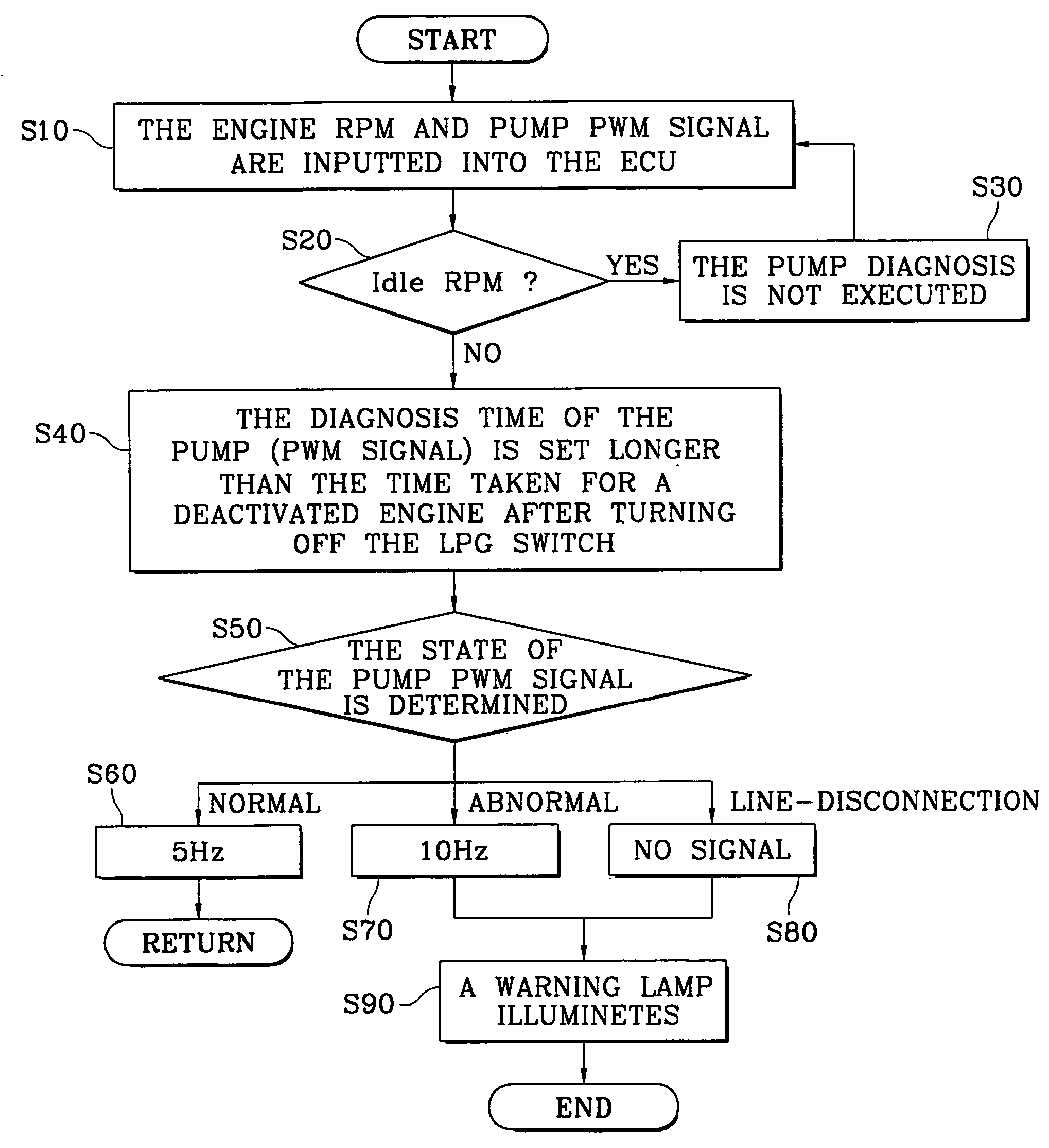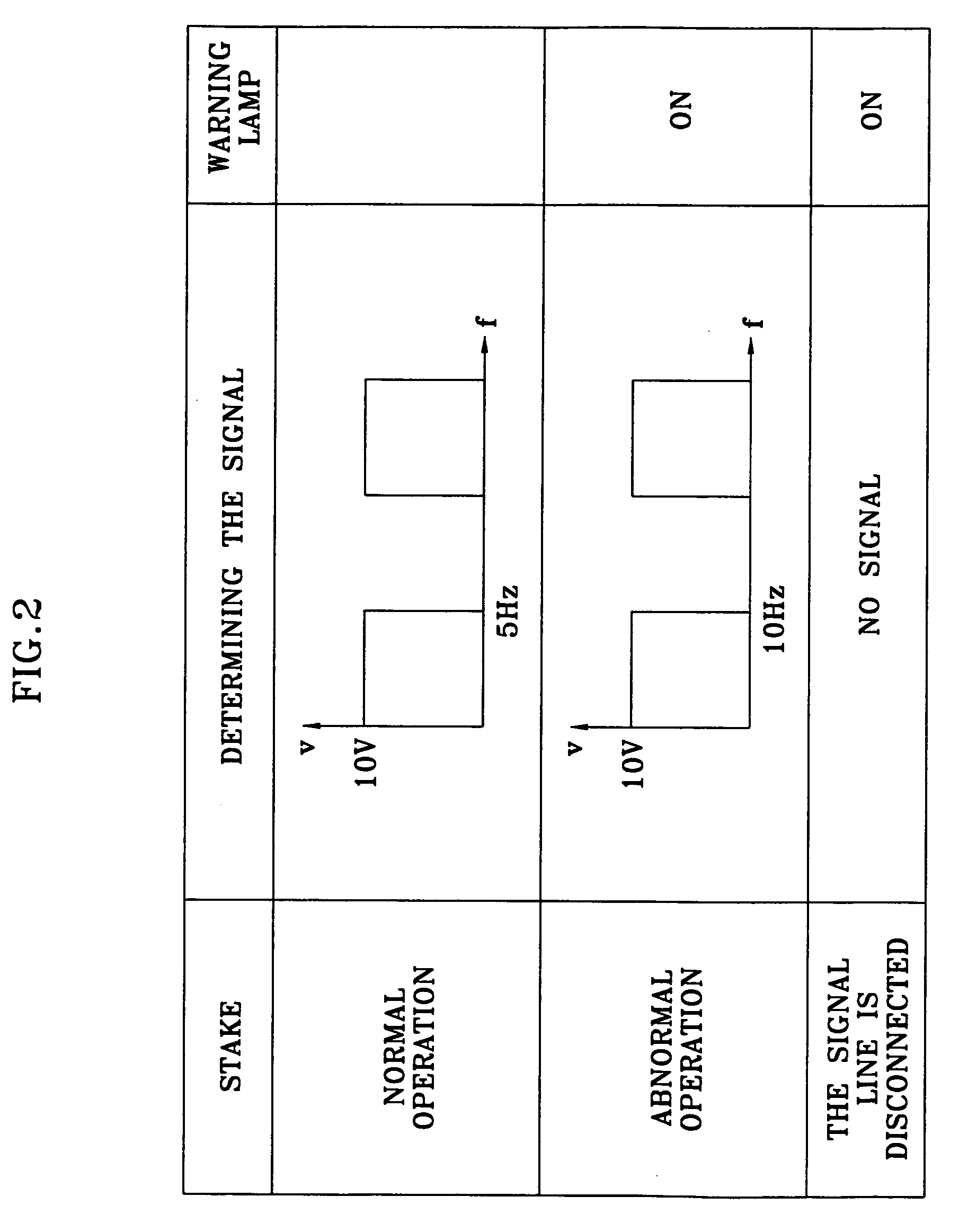Diagnosis method for liquefied petroleum injection fuel pump
- Summary
- Abstract
- Description
- Claims
- Application Information
AI Technical Summary
Benefits of technology
Problems solved by technology
Method used
Image
Examples
Embodiment Construction
[0009] Referring to FIG. 1, the present invention includes the following steps for diagnosing a Liquefied Petroleum Injection (LPI) fuel pump. An Electronic Control Unit (ECU) of an interface box receives the present engine Revolutions Per Minute (RPM) and a signal (Pulse Width Modulation: PWM signal) from a fuel pump driver (step 10). Before diagnosing the PWM signal from the fuel pump driver, determining whether the engine is idling, based upon the RPM (step 20). As is well known to one who works in this field, the idle rpm according to the embodiment of the present invention means a minimum engine RPM with the ignition of the vehicle being on, and the idle rpm typically refers to approximately 600-900 rpm. If the engine is idling, the diagnosis of the fuel pump is not executed irregardless of the on and off state of a Liquefied Petroleum Gas (LPG) switch (step 30).
[0010] However, if the engine is not idling (i.e., when the vehicle is in motion), a diagnosis time (the wait time a...
PUM
 Login to View More
Login to View More Abstract
Description
Claims
Application Information
 Login to View More
Login to View More - R&D
- Intellectual Property
- Life Sciences
- Materials
- Tech Scout
- Unparalleled Data Quality
- Higher Quality Content
- 60% Fewer Hallucinations
Browse by: Latest US Patents, China's latest patents, Technical Efficacy Thesaurus, Application Domain, Technology Topic, Popular Technical Reports.
© 2025 PatSnap. All rights reserved.Legal|Privacy policy|Modern Slavery Act Transparency Statement|Sitemap|About US| Contact US: help@patsnap.com



